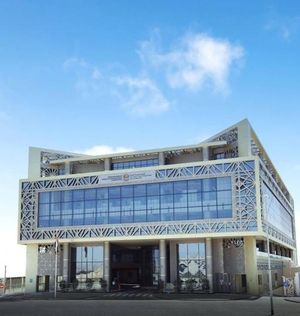On the morning of August 29, 2025, Atlanta’s notorious traffic woes reached new heights as a series of serious crashes and a dramatic truck fire brought key highways in the metro area to a grinding halt, just as thousands of commuters were heading out for the day. According to reports from 11Alive and Atlanta News First, the chaos began before sunrise and continued well into the morning rush, snarling traffic on some of the city’s busiest thoroughfares and leaving drivers scrambling for alternate routes.
At 9:15 a.m., a multi-vehicle crash involving a truck fire erupted on the I-75 Northbound exit ramp to I-285 West (Exit 238) in Clayton County, not far from the Atlanta airport. Traffic cameras captured thick plumes of smoke billowing skyward as firefighters and emergency crews raced to the scene. All lanes on the ramp were quickly closed as responders worked to extinguish the flames and clear the tangled wreckage.
The Georgia Department of Transportation (GDOT) issued an urgent advisory, warning motorists to avoid the area altogether. “Drivers should use Highway 85 or Jonesboro Road as detours,” the department stated, emphasizing the severity of the delays. With all lanes blocked, the ripple effect was immediate: traffic backed up for miles, and the usual morning commute turned into a test of patience for thousands.
“Expect major delays as crews continue working,” GDOT cautioned. The disruption was felt not just on the highways, but also on local roads as drivers sought alternate routes, further compounding the congestion.
But the I-75 incident was only part of Atlanta’s Friday morning traffic nightmare. Earlier, at 6:45 a.m., a separate crash involving an overturned vehicle had completely shut down all lanes on I-20 Eastbound past Wesley Chapel Road in DeKalb County. The scene was chaotic, with emergency crews working feverishly to upright the vehicle and clear the wreckage. According to 11Alive, the closure led to severe backups that extended throughout the morning, with drivers stuck in gridlock and delays expected to last for hours.
By 7:15 a.m., there was a glimmer of relief as at least one lane on I-20 Eastbound past Wesley Chapel Road was reopened. However, the damage was done: heavy delays persisted, with traffic backups stretching all the way to I-285. “Even though eastbound lanes are no longer fully shut down, Covington Highway remains the better option for drivers heading toward Lithonia,” 11Alive advised. The westbound side of I-20 wasn’t spared either, as a separate crash past Panola Road slowed traffic to a crawl, with some commuters facing single-digit speeds and a 32-minute slog from Lithonia to I-285. For those in the know, Covington Highway offered a much faster, 22-minute alternative.
As if that weren’t enough, yet another incident was reported on I-285 North near Lawrenceville Highway. An overturned vehicle blocked the right lane, causing heavy delays in that area and on nearby Lawrenceville Highway. The cumulative effect was a morning of frustration for countless Atlantans, many of whom rely on these vital arteries to get to work, school, or the airport.
The impact of these incidents was felt far beyond the immediate crash sites. According to Atlanta News First, the truck fire on I-75 near the airport contributed to significant traffic congestion in the area, with emergency crews working tirelessly to clear the scene and restore normal flow. Lane closures and slowdowns rippled outward, affecting connecting roads and adding to the region’s already infamous traffic challenges.
For many, the morning’s events were a stark reminder of how quickly Atlanta’s traffic can go from bad to worse. The city’s sprawling layout and heavy reliance on highways make it particularly vulnerable to cascading delays when even a single incident occurs. When multiple crashes and a fire hit at once—as they did on August 29—the result is a citywide scramble for alternate routes, and a surge in stress levels for drivers.
Throughout the ordeal, local news outlets like 11Alive played a crucial role in keeping residents informed. The 11Alive Traffic Trackers provided real-time updates, road closure alerts, and detour suggestions throughout the day. For those caught in the gridlock, every bit of information helped. The station also encouraged drivers to contribute by reporting traffic incidents, sharing photos or videos via text or through their app’s “Near Me” feature. “Nothing beats an eyewitness when it comes to breaking traffic news,” 11Alive noted, underscoring the importance of community involvement in keeping everyone informed.
The morning’s disruptions also highlighted the relentless work of first responders. Firefighters, police officers, and GDOT crews worked under pressure to manage the scenes, extinguish fires, and clear vehicles as quickly as possible. Their efforts, while tireless, were hampered by the sheer scale of the incidents and the volume of traffic affected.
For regular commuters, the advice was clear: stay flexible, stay informed, and don’t be afraid to try alternate routes when trouble strikes. As one 11Alive update put it, “Covington Highway remains the better option for drivers heading toward Lithonia.” It was a morning when old habits—sticking to the interstate, following the same path every day—proved costly, and those willing to adapt found themselves with a bit more breathing room.
Atlanta’s traffic woes are nothing new, of course. The city’s rapid growth, sprawling suburbs, and limited public transit options have long made it a poster child for congestion. But the events of August 29 were a vivid illustration of just how fragile the system can be. One truck fire, a couple of overturned vehicles, and suddenly the morning commute becomes a citywide game of musical chairs, with everyone scrambling to avoid the next bottleneck.
Looking ahead, the incidents serve as both a cautionary tale and a call to action. For city planners and transportation officials, they’re a reminder of the need for continued investment in infrastructure, better traffic management systems, and more robust public transit alternatives. For drivers, they’re a nudge to stay vigilant, keep an eye on real-time updates, and never underestimate Atlanta’s ability to throw a wrench in the best-laid plans.
As the smoke cleared and traffic slowly returned to normal, one thing was certain: in Atlanta, the only constant on the roads is change. And for those who brave the highways each day, flexibility and patience remain essential tools for survival.




